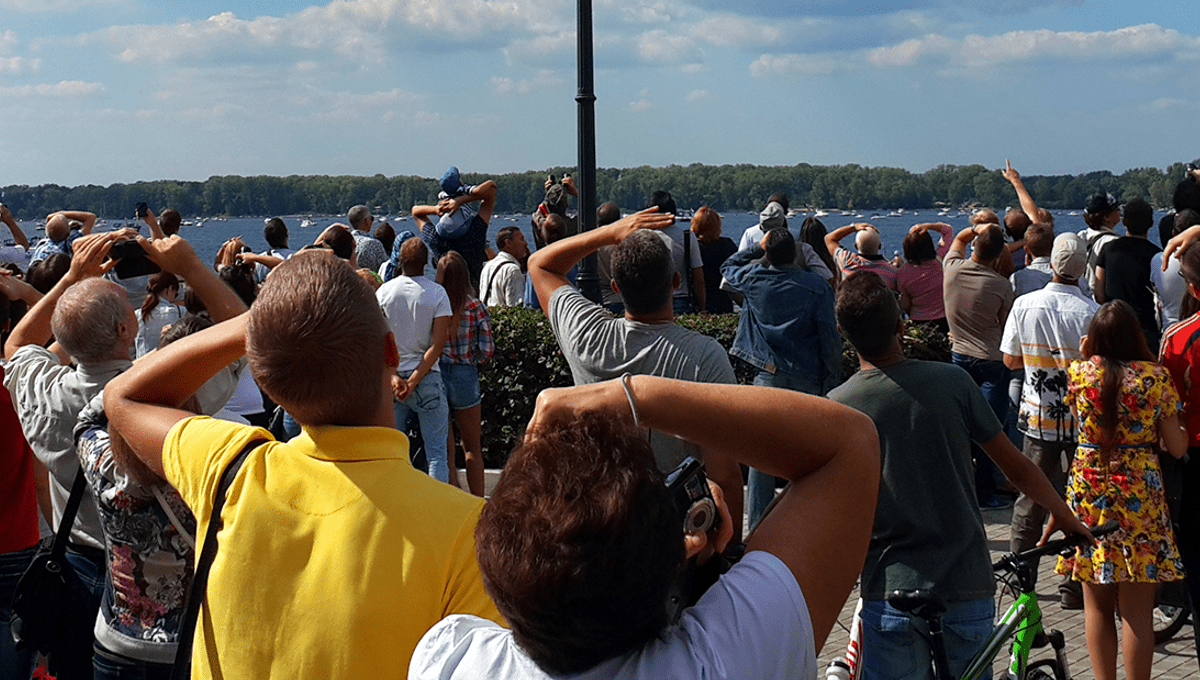
We have bad news for anyone who likes to look up at the sky and not see the words “Drink Pepsi” (for example), as researchers have found that space adverts are not only possible today, but economically feasible.
The team, from Skoltech and Moscow Institute of Physics and Technology, had previously looked at the viability of using small satellites known as “CubeSats” in orbit in order to display an image to people watching below. In this follow-up, the team wanted to see if it was economically viable for advertisers to hire such displays, considering the huge cost of putting pretty much anything into space.
“We’ve been studying some of the more technical aspects of space advertising for a while now,” the study’s first author Shamil Biktimirov from Skoltech said in a press release.
“This time we looked at the economic side of things and, as unrealistic as it may seem, we show that space advertising based on 50 or more small satellites flying in formation could be economically viable.
The key concerns are maximizing overall mission duration and a satellite’s footprint area – the scope of where it can reach to project a ‘pixel’ that would be part of the image in the sky.”
The team, publishing in the journal Aerospace, note that advertising in space has been attempted before, though never successfully carried out. In 1989, organizers celebrating 100 years of the Eiffel Tower planned to launch a string of solar reflectors that could be seen from Earth, while there was also a plan to put the Olympic symbol in space ahead of the 1996 Olympic Games in Atlanta.
The team dismissed these big stunts as not economically viable. Instead, they think space advertising could be made feasible through longer-term missions.
“A long-term space advertising mission would rely on a complex satellite system orbiting the Earth and demonstrating pixel images to observers on the ground,” the team wrote in their study. “In this case, an advertisement appears as a constellation of bright artificial stars formed into an image that can be observed in clear night sky for several minutes.”
The team looked at available tech for reflecting light at Earth – a 32 square meter (344 square foot) solar sail, which they say is the largest reflector that has so far been successfully deployed by a CubeSat – as well as the technical requirements of synchronizing the CubeSats to create an image. They found that, surprisingly, the idea was already economically feasible, and will become more so as technology improves.
“Lastly, we feel obliged to comment on a frequent objection to a space advertising mission,” the team concluded, dealing with one objection to advertising in space, “which is the sky pollution that it may cause, thus thwarting the astronomical observations.”
The team say that due to the proposed orbit, the advertisements could only be displayed at sunrise or sunset, where they won’t interfere with telescopes, adding that they would only be lit over high-density population areas (aka cities).
“Numerical analysis of Earth coverage demonstrated that the best strategy for economic feasibility of the system is to perform demonstrations at megalopolises with big population and high cost per mile,” the team wrote. “The cities typically have permanent light pollution and are not considered as locations for observatories for which the image demonstration can be harmful.”
Get ready folks, you could soon see the sunrise next to the words “brought to you by Coca Cola”, whether you want to or not.
The study is published in the journal Aerospace.
Source Link: Oh God: Study Finds Space Adverts Are Already Possible And Economically Feasible